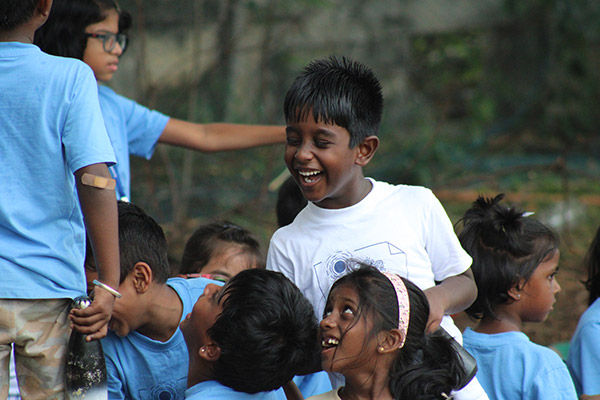Who’s Holding the Pencil? By Maya Thiagarajan
- Chettinad - Sarvalokaa Education

- Jul 12, 2020
- 3 min read
My daughter, aged 5, held a pencil and started writing a sentence in her notebook. The sentence was riddled with errors. (Of course it was – she was only five!) I looked at the errors, sighed in exasperation, took the pencil out of her small hands, and rewrote the sentence for her.
“There! Can you see what you need to do?” I asked her. She nodded her head, gazing outside the window.
The first letter was capitalized, the spellings were correct, and there was a full stop at the end. The sentence looked really good.
But what had my daughter learnt from the experience?
She had learned absolutely nothing about capitalization, spelling, punctuation or writing. The only real lesson she had learnt is that her own writing wasn’t good enough.
Who’s Holding the Pencil?
One of the best pieces of teaching and parenting advice I’ve ever been given is this: Make sure that you never, ever take the pencil or pen out of a child’s hand.
In today’s world, perhaps we should add, make sure that you never try to take control of your child’s keyboard.
Is it hard to watch a child make a mistake that you could so easily fix?
Yes. It’s very frustrating.
Is it hard to explain an error to a child and have him correct it himself?
Yes. It’s time consuming. It would be so much quicker to just correct it yourself.
However, hard as it may be, we have to give our children the space to try, to make mistakes, to correct their own mistakes, and to do their own work. It’s only when children do their own work that they actually learn.
The real question is: Are they learning?
When you watch a child making a mistake, your instinct might be to correct the mistake for your child. Your instinct might be (like mine was) to take the pencil or pen or keyboard from the child and do the work yourself. When that happens, ask yourself this question:
Is it more important to me that the work is perfect or that my child is learning?
If learning is the goal, then the child has to do the work herself. If there are errors, she has to identify them and correct them herself. The final product may not be perfect (it probably won’t be), but the child would have learnt from the process.
Helping your child with independent learning:
If we want to help our children grow up and master important skills, we need to realize that the process of learning is more important than the final product. The fact of the matter is that real learning is messy and difficult, and usually entails imperfect final products.
However, if we want to help our children learn and grow, we have to back off a bit. Let your child stay in control of her pencil. Let them do their work on their own. Compliment their efforts. Then point out one or two errors (or better yet, ask them to figure out what errors they might have made). Ask them to correct her own work. Wait till they makes the correction.
Then, ask them: What did you just learn?
Maya Thiagarajan is an academic mentor to Chettinad Sarvalokaa Education. Maya holds a Masters in Education from Harvard University and a BA in English from Middlebury College. She is the author of ‘Beyond the Tiger Mom: East-West Parenting for the Global Age’.







Comments